The Power of Nature: Learn about the forces behind a living volcano
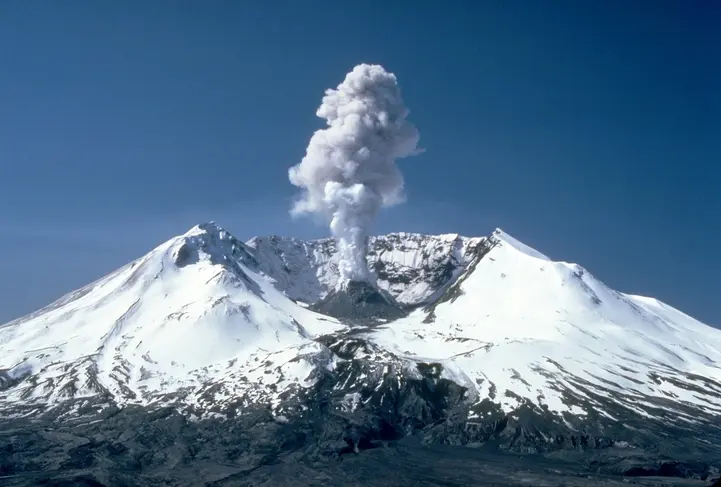
The power of nature is irresistible magic, as its ability to shape stunning landscapes and cause massive natural disasters is demonstrated. Among these forces that deserve special attention and recognition are living volcanoes. Volcanoes are described as windows to Earth's inner world, a way to erupt and threaten at the same time. In this article, we will discover the amazing power of nature and behind living volcanoes, and learn how they formed and the great effects they have.
Show key points
- Living volcanoes are powerful natural formations that serve as dynamic gateways to Earth's inner layers and significantly influence landscapes and human life.
- Their structure, composed of distinct layers including the crust, mantle, and core, plays a crucial role in how volcanic eruptions occur and behave.
- Understanding the composition and pressure buildup within volcanoes enables scientists to predict eruptions and classify volcanic activity for safety planning.
- ADVERTISEMENT
- Comprehensive early warning systems and emergency response strategies, such as evacuation plans and lava cooling techniques, are essential in minimizing the hazards of volcanic eruptions.
- Volcanic eruptions can lead to widespread environmental damage, including the destruction of ecosystems, air pollution, and climate change, while also offering potential benefits like mineral resources and agricultural land enrichment.
- Scientific research in volcanology not only enhances eruption prediction and disaster preparedness but also helps preserve cultural heritage and biodiversity in volcanic regions.
- The geothermal energy produced by volcanoes presents a valuable opportunity for sustainable energy production, offering clean electricity, heating solutions, and water desalination.
The formation of living volcanoes: the role of stratigraphy in volcanic eruptions
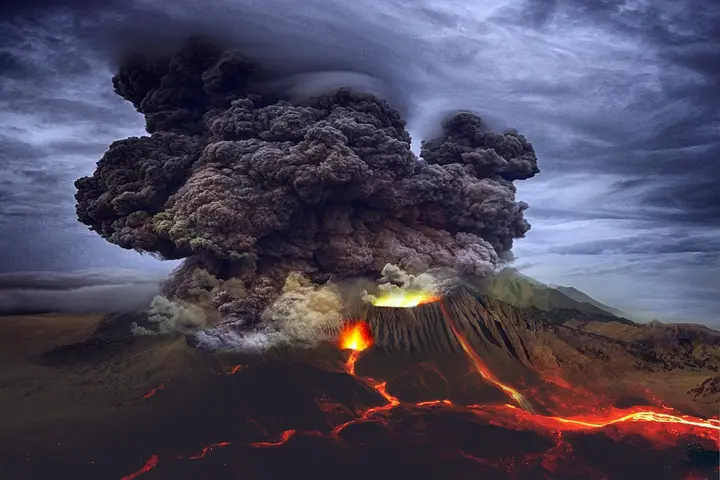
Living volcanoes are nature's breathtaking gems, as they form windows that reveal a secret and mysterious world made up of the layers that cover our surface. Understanding the composition of living volcanoes is key to understanding their amazing behavior and predicting volcanic eruptions.
Recommend
Living volcanoes consist of several layers of the earth, starting from the inner core of the Earth and extending to the outer crust. The inner core is made of solute and solid substances of iron and nickel, and generates tremendous heat as a result of nuclear reactions in the nucleus. The outer enclosing layer protects the inner core and prevents the spread of heat and substances to the outside.
Between the inner core and the outer crust is the molten crystal layer, a layer of melted rock and minerals that travel between the solid and liquid states. These substances are clustered in vessels known as feeders, which are similar in shape to long tubes. Through these nutrients, the solute seeps into the surface as they accumulate in volcanic clouds.
The earth's crust is the outer part on which we live, and it is made up of rock and soil. When pressure and heat combine in Earth's crust, nuclear changes can occur within rocks and minerals, leading to increased pressure, heat and the formation of lava that seeps into the surface through volcanic holes.
Understanding the composition of live volcanoes and lava accumulation contributes to predicting eruptions, classifying volcanoes and understanding their pattern of behavior, which contributes to the protection of local populations and mitigating the effects of natural disasters caused by volcanic eruptions. The power of nature in the formation of living volcanoes reminds us of its immense ability to shape and change, and makes us marvel at its unique beauty and complexity.
Volcanic Behavior: A Look at the Behavior of Live Volcanoes and the Probability of Eruptions
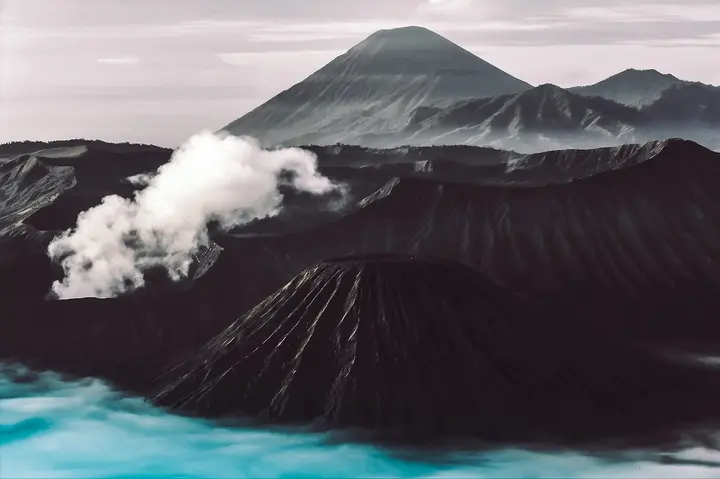
Live volcanoes emit immense and destructive force that can cause serious damage to the environment and surrounding populations. Therefore, it is necessary to provide effective warnings and countermeasures to limit the effects of these dangerous volcanic eruptions. In this subheading, we'll explore the early warnings that can be made available and the countermeasures available to deal with that enormous natural force.
1- Early warning systems: Early warning systems prove the importance of early warning systems in cases of live volcanoes, where sensors and monitoring are installed to monitor volcano activity and monitor sudden rises in temperatures and gas changes. When any suspicious changes are detected, early warnings are issued to warn residents and take action.
2- Contingency plans: Contingency plans for live volcanoes are an important part of anti-volcanic eruption measures. Accurate contingency planning, including evacuation of residents and provision of safe shelters, is essential to ensure their safety and minimize casualties.
3- Preventive techniques: There are preventive techniques and means that can be used to control the intensity of volcanic eruptions. An example of this technique is cooling volcanoes by pumping water onto lava, which helps reduce the speed of lava escalation and reduce the likelihood of severe eruptions.
4- Public awareness: Public awareness of the danger of live volcanoes and their effects is essential in improving preparedness and proper behavior in the event of a volcanic eruption. Clear and understandable information should be provided to the population and made aware of the preventive measures that must be taken to keep them safe.
5- Ongoing scientific research: Scientific research in the field of living volcanoes continues to improve our understanding of this natural force and enhance our ability to predict volcanic eruptions and counteract their impacts. Investing in scientific research in this area is essential to improve early warning and prevention measures.
With these warnings and countermeasures, we can effectively deal with volcanic eruptions and reduce their negative impacts. Nature remains powerful and mysterious, but with cooperation and science we can live side by side with and control that immense power.
Effects of live volcanoes: How does the eruption of lava affect the environment and humans?

The rise of lava from live volcanoes is an exciting natural phenomenon and has wide-ranging impacts on the environment and humans. These volcanic eruptions occur suddenly and carry with them high heat and harmful substances, making them a major challenge to the environment and living organisms. To understand the effects of lava spike on the environment and humans, the following factors must be considered:
1- Destruction of natural spaces: Near living volcanoes there are unique natural environments, such as forests, waterfalls and diverse wildlife. As lava rises, these important natural spaces can be damaged and lead to the loss of native plant and animal species.
2- Air pollution: The rise of lava releases many harmful substances into the air, such as toxic gases, volcanic ash and small particles. These substances can pollute the air, negatively affect air quality and threaten human health and local wildlife.
3- Climate change: The rise of lava contributes to an increase in carbon dioxide in the atmosphere, which is the main greenhouse gas. Thus, it can lead to increased global warming and unexpected climate changes.
4- Natural disasters: Live volcanoes may cause natural disasters, such as the destruction of homes and damage from earthquakes and tsunamis. This can significantly affect local communities and requires comprehensive evacuation and reconstruction measures.
5- Potential benefits: In addition to the negative effects, the rise of lava may also generate some benefits. For example, lava can be used in the construction and agricultural industries, and it is believed that some rare metals can be a commercial masterpiece.
We must be aware that lava spike represents an enormous natural force and may have significant impacts on the environment and humans. By understanding these impacts, we can improve our preparedness to deal with live volcanoes and protect diverse lives and communities from their potential impacts.
The study of living volcanoes: the importance of scientific research in understanding these potential forces
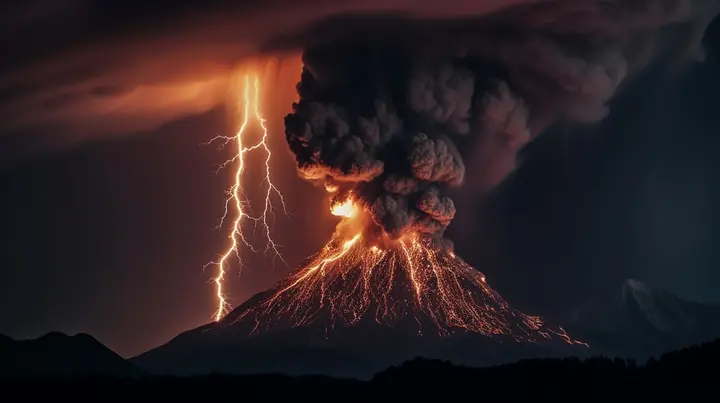
The study of living volcanoes is one of the most important areas of scientific research in the field of geology and earth sciences. These studies contribute to understanding the mechanisms and factors that lead to volcanic eruptions and their impact on the environment and humanity. These studies also help us develop methods for predicting volcanoes and identifying vulnerable areas, which contributes to protecting populations and reducing potential losses.
Volcanology and the study of volcanic phenomena are one of the effective lessons that can teach us a lot about the history of the Earth and its geographical formation. By analyzing volcanic material, scientists can understand the Earth's internal composition, tectonic plate movements, and their impact on volcanic activity. These studies can also identify the underlying forces that cause volcanic eruptions, improving volcano prediction and geological preparation for potential disasters.
The study of living volcanoes also plays a crucial role in the conservation of cultural and natural heritage. Understanding the impact of volcanoes on landscapes and the environment helps protect archaeological sites and preserve biodiversity in those areas. The study of living volcanoes helps develop strategies to manage volcanic areas, and identify optimal places for volcanic tourism in safe and sustainable ways.
Understanding the power of living volcanoes is key to protecting human life, the environment and cultural heritage. Therefore, research and studies in this field must be supported, and scientific and technical cooperation between countries and various scientific institutions must be strengthened. Efforts to understand and study living volcanoes contribute to enhancing safety and sustainability in volcano-prone areas, balancing the preservation of our natural and cultural heritage and exploring nature's secrets and potential.
Live volcanoes and technology: how can the thermal energy generated by volcanoes be exploited?
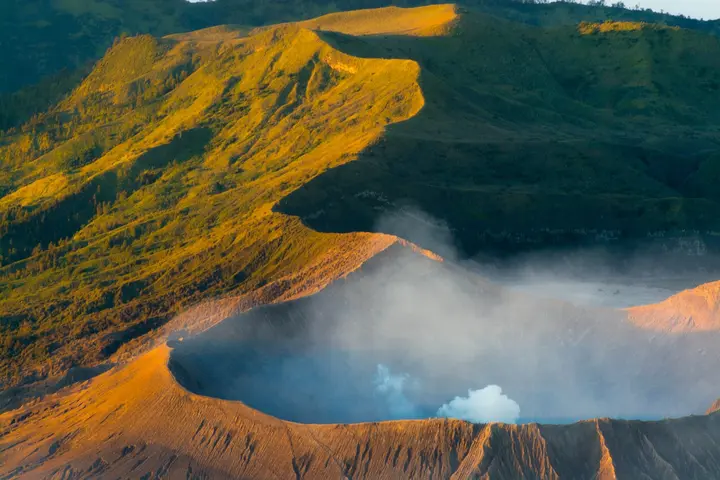
When we talk about living volcanoes, the first thing that comes to mind is the danger and threat posed by their existence. However, this potential force in the Earth can be exploited positively and beneficially, by extracting the enormous thermal energy produced by volcanoes. Scientists and engineers began to take advantage of this renewable energy to generate electricity, operate factories and heat buildings. In this technologically advanced age, we can say that living volcanoes are not only a formidable natural force, but also a source of exploitable thermal energy.
One of the most prominent ways to exploit the thermal energy generated by volcanoes is through the construction of geothermal power plants. These plants rely on exploiting the high temperature found underground near the crater. Steam is conserved and directed towards turbines propelled by steam to generate electricity. In this way, large amounts of clean and renewable electricity can be generated. Relying on this heat energy from volcanoes contributes to reducing our dependence on traditional energy sources that pollute the environment and slowly deplete.
In addition, the thermal energy generated by volcanoes can also be used for other purposes. The heat emitted by volcanoes can be directed towards water pipes to heat fresh water or salt water in desalination plants. This use reduces pollution and provides clean water for use in agriculture, industry and domestic purposes.
By harnessing living volcanoes and harnessing the thermal energy generated by them, we transform nature's immense power into clean and sustainable energy. Our state-of-the-art technologies and innovations enable us to harness this power safely and efficiently. By doing so, we have opened a new door to the world of renewable energy, and we achieve our goals of preserving the environment and providing clean energy for future generations.

Living volcanoes remain magnificent natural masterpieces and a force to be reckoned with, reminding us of nature's ability to innovate and regenerate. Despite the threat posed by their existence, understanding these latent forces increases our ability to adapt and take appropriate preventive action. So, let's enjoy the beauty of this wondrous natural phenomenon and appreciate its ability to shape and destroy at the same time.
![]()
What makes the global demand for Arabic grow?
Arabic is booming globally, reflecting pride, rich culture, and growing global influence. With rising demand in business, media, internet, and diplomacy, Arabic is becoming essential in today’s world, offering vast opportunities for communication, jobs, and cultural exchange. more- ADVERTISEMENT
![]()
How to develop your self-confidence?: The journey of character building and self-development
Self-confidence is a powerful inner force that grows through experience, reflection, and personal development. It's not inherited but built over time. With positive thinking, healthy habits, and clear goals, anyone can strengthen their self-worth and face life with courage and resilience. more- ADVERTISEMENT
![]()
Embracing stupidity: the hidden value of our mistakes
Embracing stupidity: the hidden value of our mistakes more- ADVERTISEMENT
![]()
LI-FI: where the Internet travels at the speed of light
LI-FI, created in 2011 by Prof. Harald Haas in Scotland, uses light instead of radio waves for data transfer. It offers ultra-fast speed and strong security, making it ideal for sensitive environments. Despite its promise, challenges like high costs and dependency on constant lighting limit its widespread use. more- ADVERTISEMENT
![]()
The real signs of a very intelligent person
True Signs of a Highly Intelligent Person more- ADVERTISEMENT
![]()
7 physical cues that can help you read someone like an open book
Body language reveals more than words—handshakes, smiles, and even foot movements hint at confidence, stress, or honesty. A dominant handshake may suggest control; sincere smiles reach the eyes; fidgeting signals anxiety. Pay attention to these subtle cues, but always consider context—it's the key to truly understanding someone. more- ADVERTISEMENT
![]()
Eastern musical maqams and western stairs
Eastern musical maqams and western stairs more- ADVERTISEMENT
![]()
Do you know why hair becomes white with age and not skin?
White hair can show up early due to genetics, stress, vitamin B12 deficiency, or smoking. While aging is a natural cause, lifestyle and health factors also play a role. Sometimes, treating underlying issues like thyroid problems or vitamin deficiencies may help restore hair color. more- ADVERTISEMENT
![]()
Blood test uses 'protein clock' to predict risk of Alzheimer's disease and other diseases
Blood test uses 'protein clock' to predict risk of Alzheimer's disease in others more- ADVERTISEMENT
![]()
5 electronic games to develop your skills and intelligence
Discover how video games like SimCity, Stardew Valley, and Gorogoa can sharpen your mind, boost creativity, and help with planning and decision-making—all while having fun. Not all games are just for play; some are powerful tools for personal growth and learning. more- ADVERTISEMENT





















